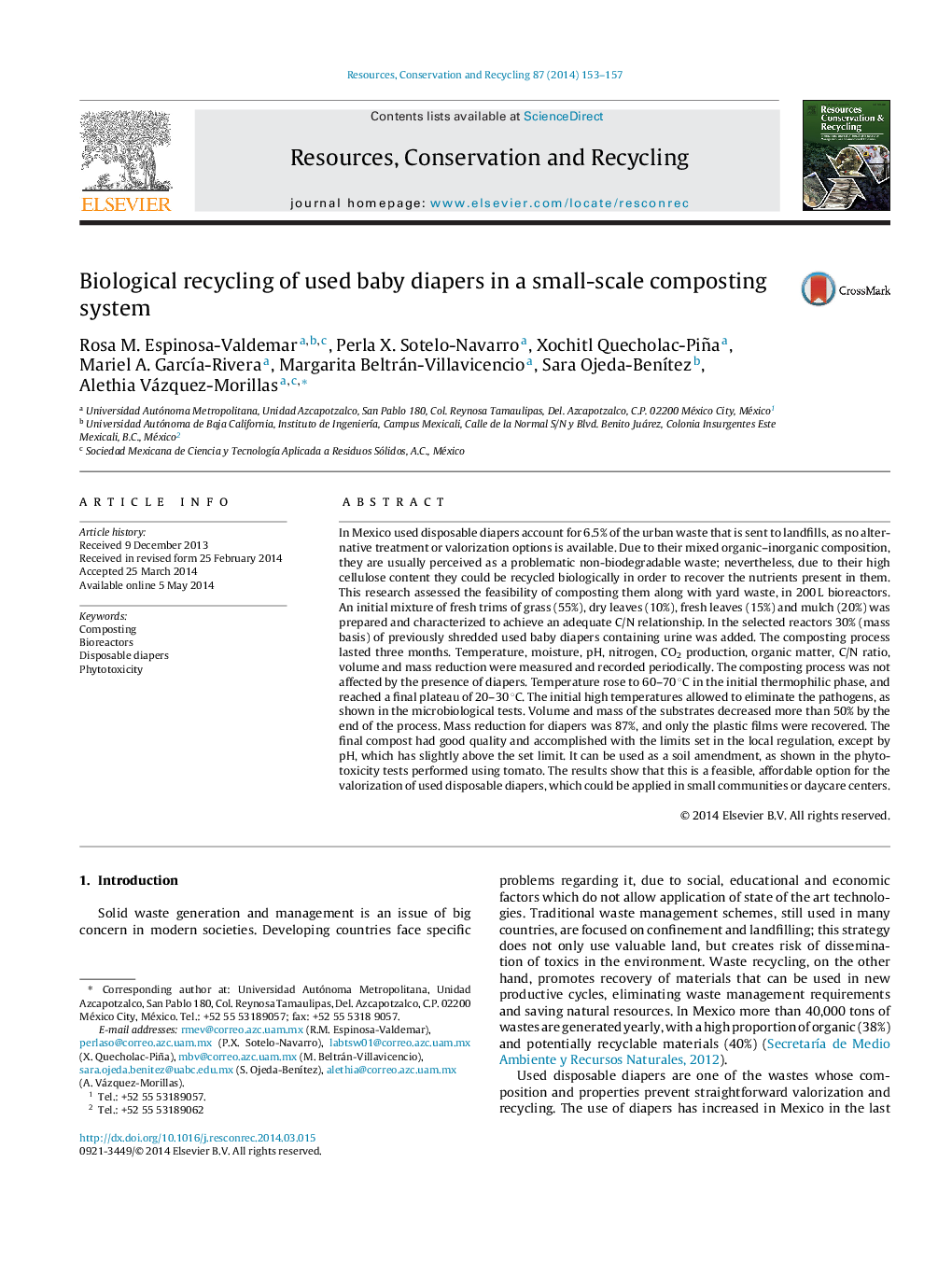| Article ID | Journal | Published Year | Pages | File Type |
|---|---|---|---|---|
| 1062915 | Resources, Conservation and Recycling | 2014 | 5 Pages |
•Used baby diapers were composted along with yard waste in 200 L bioreactors.•The mass of diapers was biodegraded and reduced 87%.•The quality of the compost was not affected by the presence of diapers.•The system is easy to operate and could lead to valorization of a complex and very common waste.
In Mexico used disposable diapers account for 6.5% of the urban waste that is sent to landfills, as no alternative treatment or valorization options is available. Due to their mixed organic–inorganic composition, they are usually perceived as a problematic non-biodegradable waste; nevertheless, due to their high cellulose content they could be recycled biologically in order to recover the nutrients present in them. This research assessed the feasibility of composting them along with yard waste, in 200 L bioreactors. An initial mixture of fresh trims of grass (55%), dry leaves (10%), fresh leaves (15%) and mulch (20%) was prepared and characterized to achieve an adequate C/N relationship. In the selected reactors 30% (mass basis) of previously shredded used baby diapers containing urine was added. The composting process lasted three months. Temperature, moisture, pH, nitrogen, CO2 production, organic matter, C/N ratio, volume and mass reduction were measured and recorded periodically. The composting process was not affected by the presence of diapers. Temperature rose to 60–70 °C in the initial thermophilic phase, and reached a final plateau of 20–30 °C. The initial high temperatures allowed to eliminate the pathogens, as shown in the microbiological tests. Volume and mass of the substrates decreased more than 50% by the end of the process. Mass reduction for diapers was 87%, and only the plastic films were recovered. The final compost had good quality and accomplished with the limits set in the local regulation, except by pH, which has slightly above the set limit. It can be used as a soil amendment, as shown in the phytotoxicity tests performed using tomato. The results show that this is a feasible, affordable option for the valorization of used disposable diapers, which could be applied in small communities or daycare centers.
